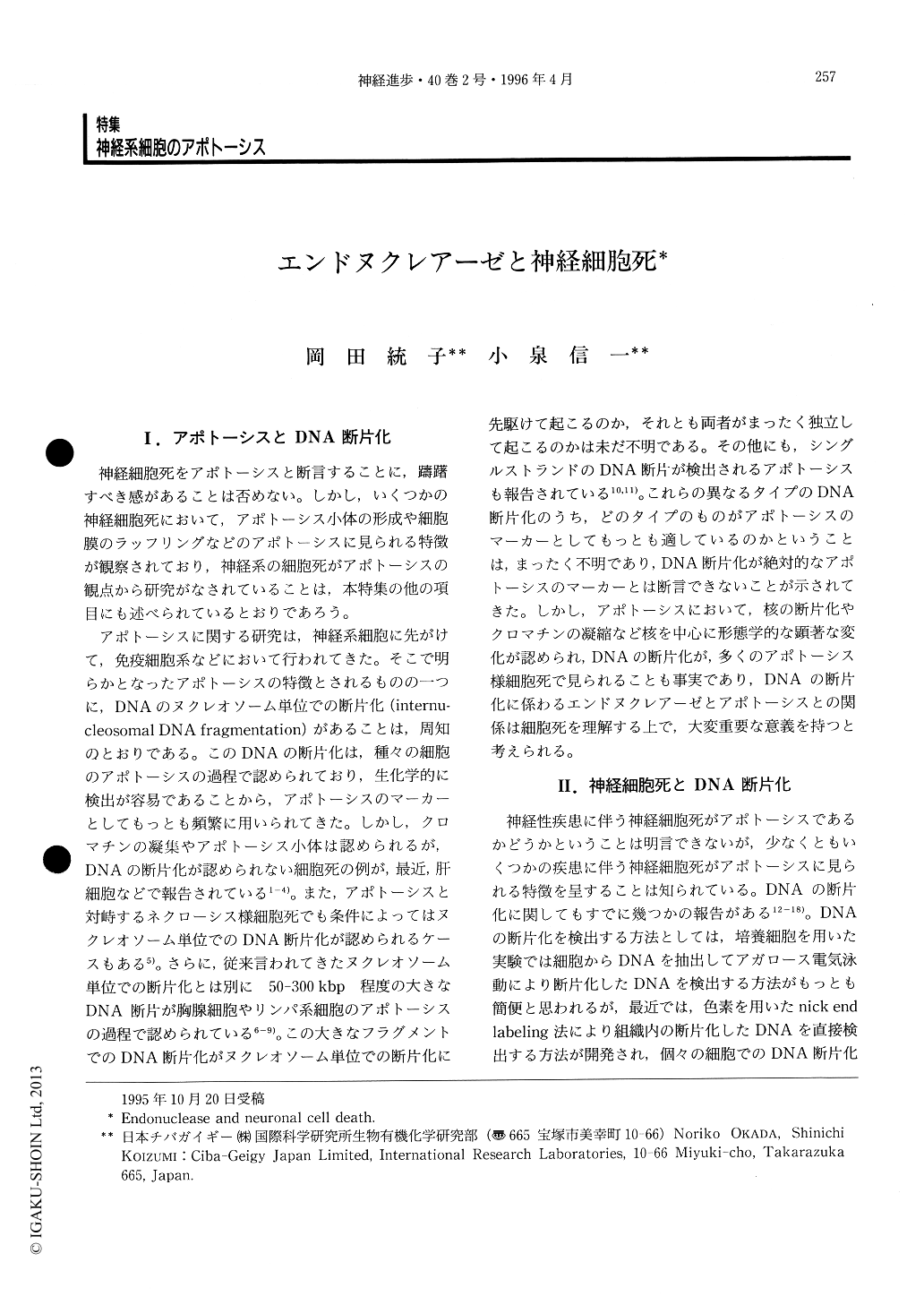Japanese
English
- 有料閲覧
- Abstract 文献概要
- 1ページ目 Look Inside
I.アポトーシスとDNA断片化
神経細胞死をアポトーシスと断言することに,躊躇すべき感があることは否めない。しかし,いくつかの神経細胞死において,アポトーシス小体の形成や細胞膜のラッフリングなどのアポトーシスに見られる特徴が観察されており,神経系の細胞死がアポトーシスの観点から研究がなされていることは,本特集の他の項目にも述べられているとおりであろう。
アポトーシスに関する研究は,神経系細胞に先がけて,免疫細胞系などにおいて行われてきた。そこで明らかとなったアポトーシスの特徴とされるものの一つに,DNAのヌクレオソーム単位での断片化(internucleosomal DNA fragmentation)があることは,周知のとおりである。このDNAの断片化は,種々の細胞のアポトーシスの過程で認められており,生化学的に検出が容易であることから,アポトーシスのマーカーとしてもっとも頻繁に用いられてきた。しかし,クロマチンの凝集やアポトーシス小体は認められるが,DNAの断片化が認められない細胞死の例が,最近,肝細胞などで報告されている1-4)。また,アポトーシスと対峙するネクローシス様細胞死でも条件によってはヌクレオソーム単位でのDNA断片化が認められるケースもある5)。
DNA fragmentation is one of the most well-known characteristic of apoptosis. However, it is still questionable whether DNA fragmentation is associated with all apoptosis. The DNA endonuclease responsible for DNA fragmentation has been studied in various apoptosis models. Several endonucleases have been studied as candidates for the one that is responsible for DNA fragmentation in apoptosis and some of them are suggested to be activated in the apoptosis of non-neuronal tissues. However, there is no concrete evidence which indicates the involvement of any specific endonuclease in apoptosis.

Copyright © 1996, Igaku-Shoin Ltd. All rights reserved.


